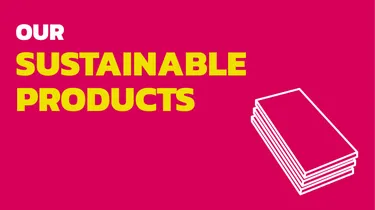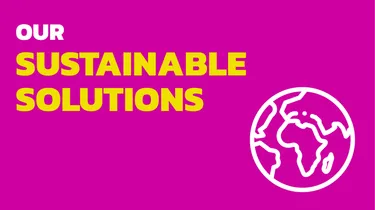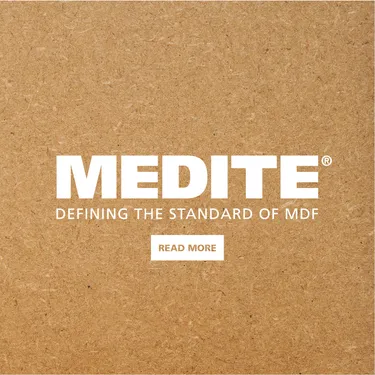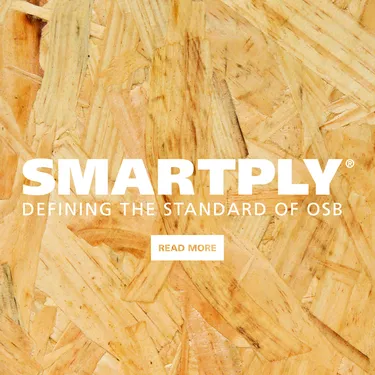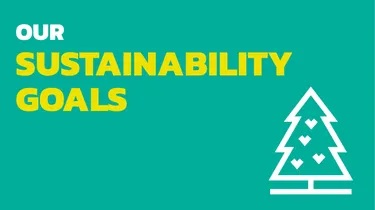
One of the major greenhouse gases; human activities such as deforestation and burning of fossil fuels release this gas into the atmosphere. Natural processes such as the growth of trees and plants can withdraw and store carbon from the atmosphere over their lifetime.
A unit of measure for comparing and combining the relative impact of climate warming potential across all GHGs to that of carbon dioxide.
The total amount of greenhouse gases emitted (e.g., organisational carbon footprint or product carbon footprint) and typically reported as kg or tonnes CO2e.
Where the overall levels of carbon removals are greater than the emissions released over a stated boundary. Removals can be achieved in the form of technology (e.g., carbon capture) or sequestration (e.g., nature-based solutions).
The balancing of residual carbon emissions through purchase of an equivalent amount of carbon offsets (also referred to as carbon credits).
A carbon offset represents a carbon reduction of 1 tonne CO2e through carbon management projects around the world. There are several carbon offset certification schemes, including Gold Standard, Verified Carbon Standard (VCS), and the UN Clean Development Mechanism (CDM). These schemes have verification processes in place to validate and certify the carbon emission reduction projects before they can become a carbon offset credit. The credits are a digital commodity that companies can purchase to “offset” their carbon emissions.
The capture and storage of biogenic carbon dioxide, removing it from the atmosphere over the plant or tree’s lifetime, and storing it in the physical matter of the material. A timber product is made up of around 50% Carbon (C) by dry mass. At the end of life of such materials, the stored carbon may be released back into the atmosphere, for example through incineration, natural degradation or through decaying in a landfill. Sustainable forest management supports carbon sequestration.
Considers all activities starting with the extraction of materials from the earth (the cradle), their transportation, refining, processing and fabrication activities until the material or product is ready to leave the factory gate.
Includes the cradle to gate results and the transportation of the material or product to its site of use.
Includes the cradle to site results but also includes the GHG emissions associated with the in use of the material or product (maintenance) and the end of life (disposal, reuse, recycling).
Embodied carbon is the carbon footprint of a material. It considers the amount of greenhouse gas emissions (GHGs) that are released throughout a production supply chain to produce a material or product. It is often measured with the boundaries of cradle to gate, cradle to site, or cradle to grave. It considers all extraction, transport, processing and fabrication activities of a material or product.
Refer to “Embodied Carbon”
Compound gases released into the atmosphere that absorb and emit radiant energy within the thermal infrared range. This release causes the earth’s temperature to rise contributing to a warming effect, driving the climate change emergency. Greenhouse gases caused by human activities include carbon dioxide (CO2), methane (CH4), nitrous oxide (N2O), hydrofluorocarbons (HFCs), perfluorocarbons (PFCs), sulfur hexafluoride (SF6) and nitrogen trifluoride (NF3).
“When the amount of carbon emissions associated with a building’s product and construction stages up to practical completion is zero or negative, through the use of offsets or the net export of on-site renewable energy.” UKGBC
Net Zero Carbon Construction also requires the project to demonstrate reductions in construction and operational carbon impacts, before the use of carbon offsets is considered.
The SBTi defines the state of net-zero emissions for companies as reaching a state of no impact on the climate resulting from the organization’s GHG emissions. Reaching a status of science-based net-zero emissions implies the following two conditions:
Achieving a scale of value chain emissions reductions consistent with the depth of abatement at the point of reaching global net-zero in pathways that limit warming to 1.5°C with no or low overshoot.
Neutralising the impact of any source of any residual emissions by permanently removing an equivalent volume of atmospheric CO2.
“When the amount of carbon emissions associated with the building’s operational energy on an annual basis is zero or negative. A net zero carbon building is highly energy efficient and powered from on-site and/or off-site renewable energy sources, with any remaining carbon balance offset.” UKGBC
Net Zero Carbon Operational typically requires an initial reduction of building energy consumption. The residual emissions can then be balanced through carbon offset credits. Offsets should only be considered once actual carbon reduction limits have been reached. The extent offsets can be utilised under Net Zero targets can vary between different sectors and Net Zero frameworks.
Net Zero Carbon for Manufacturers is defined in the same way as net zero for corporates. This requires the reducing of relevant organisational scope 1, 2, and 3 emissions (refer to “Scope of Emissions”) to zero, or to a residual level that is consistent with reaching net-zero emissions in alignment with the global 1.5°C reduction pathways.
Any residual emissions which cannot be reduced to zero must be neutralized via carbon removals at the net-zero target year as well as for any GHG emissions released into the atmosphere thereafter. Offsets should only be considered once actual carbon reduction limits have been reached. The extent offsets can be utilised under Net Zero targets can vary between different Net Zero frameworks.
Classification of greenhouse gases into 3 groups, using the Greenhouse Gas Protocol, which is a carbon accounting and reporting standard.
Scope 1 accounts for direct emissions from owned or controlled sources for example, emissions from combustion within owned or controlled boilers, furnaces, vehicles, etc.
Scope 2 accounts for indirect emissions from the generation of purchased sources, such as purchased electricity, heat, steam, and cooling.
Scope 3 covers all other indirect emissions throughout a company’s value chain and considers emissions that occur as a consequence of a company’s own “upstream” or “downstream” activities.
Coillte is responsible for managing 440,000 hectares of primarily forested lands. It is the nation’s largest forester and producer of certified wood, a natural, renewable and sustainable resource. Coillte is also the largest provider of outdoor recreation in Ireland, it enables wind-energy on the estate, manufactures panel-board wood products and undertakes nature rehabilitation projects of scale. Coillte delivers the multiple benefits of forestry, including forests for climate, for nature, for wood and for people.
Coillte’s forest management is certified as sustainable by the FSC®¹ (Forest Stewardship Council®) and the PEFC² (Programme for the Endorsement of Forest Certification). Both FSC® and PEFC forest management certification schemes which audit and inspect forest managers to ensure their work meets strict forest management standards against social, economic and environmental criteria.
Coillte’s forest management is certified as sustainable by the FSC®¹ (Forest Stewardship Council®) [Certification Registration code SA-FM/COC -000706] and the PEFC² (Programme for the Endorsement of Forest Certification [SA-PEFC-FM/COC-000706]). The Soil Association, on behalf of both certification schemes, audit and inspect forest managers to ensure their work meets strict forest management standards against social, economic and environmental criteria.
¹FSC® licence code FSC- C005714
²PEFC licence code PEFC/17-23-042
